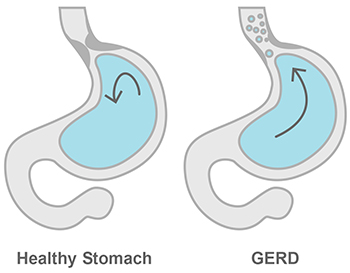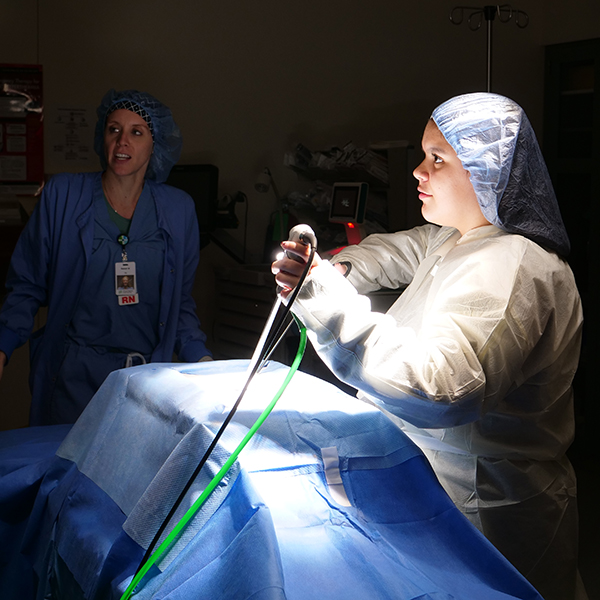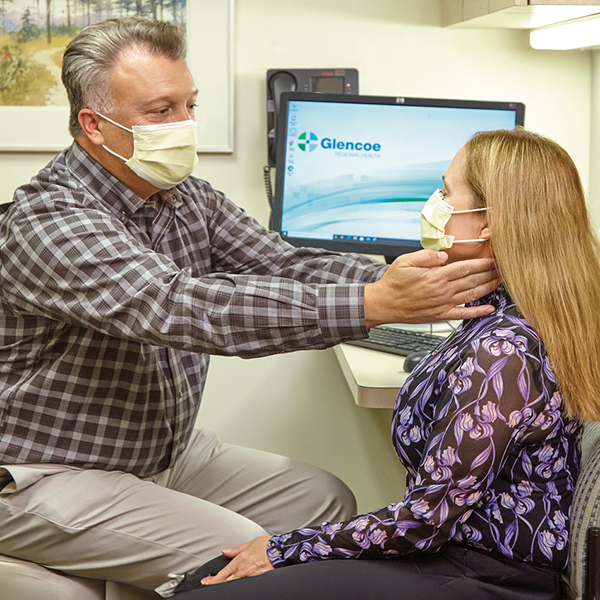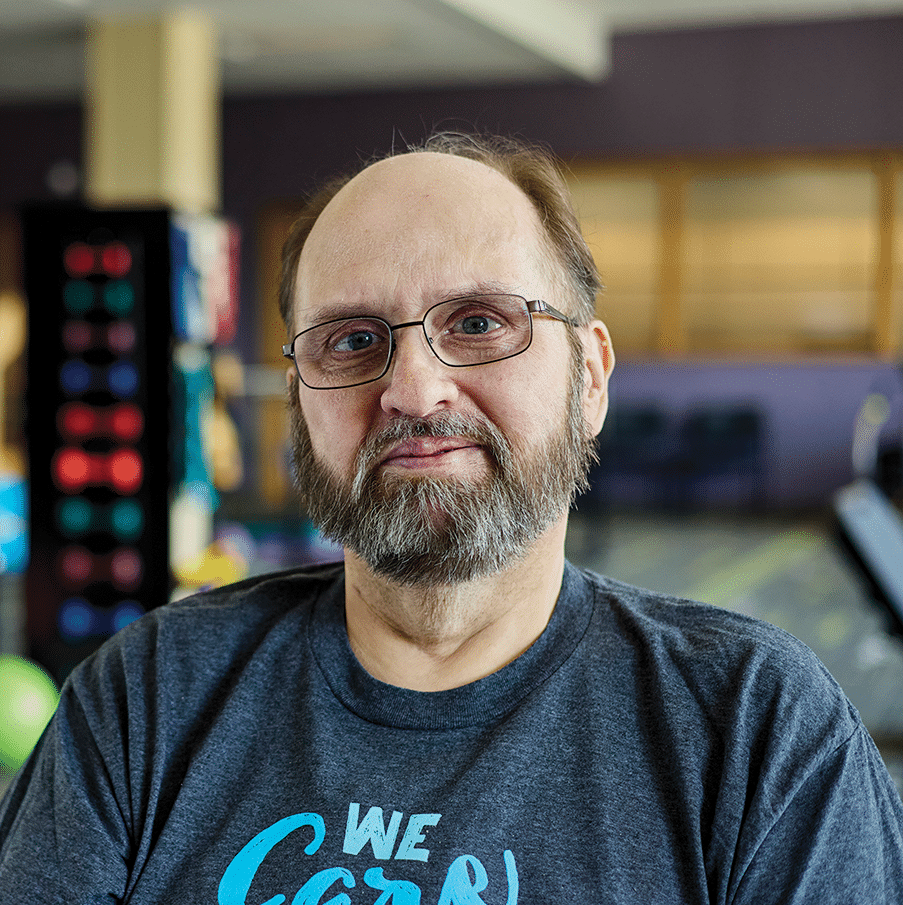FACT: 1 in 4 Americans experience reflux.
The symptoms of acid reflux and heartburn are unpleasant and can affect quality of life, poor sleep, and dietary restrictions. We’ve invested in technology to diagnose and treat patients with GERD.
What is Gastroesophageal Reflux Disease (GERD)?
GERD is a digestive disorder that allows food and stomach acid to back up into your esophagus. Your esophagus is the tube that connects your mouth to your stomach. There is a flap valve that connects your esophagus to your stomach. It opens to let food into your stomach and then closes. With GERD, the flap doesn’t always work properly. It may be weak or open at the wrong time. GERD can cause heartburn or acid indigestion.
Having heartburn often or for a long time (chronic) may be a symptom of GERD. Damage caused by GERD can lead to problems with swallowing, a narrowing of your esophagus, Barrett’s esophagus, and cancer.

What are the symptoms of GERD?
GERD can lead to both typical and atypical symptoms, which can vary from mild or moderate to severe, depending on the individual.
Common symptoms include:
- Difficulty swallowing
- Heartburn and chest pain
- Regurgitation of food or sour liquid
- Sensation of food stuck in the throat
- Sour or bitter taste in the mouth
Less common symptoms include:
- Asthma
- Bad breath
- Choking while eating or drinking
- Chronic sore throat
- Discomfort in ears and nose
- Excessive throat clearing
- Feeling of lump in throat
- Frequent burping
- Laryngitis and hoarseness
- Persistent dry cough
- Scratchy throat
- Sudden coughing episodes
- Trouble sleeping
How is GERD diagnosed?
GERD can range in severity and can be a primary condition or a set of symptoms secondary to other chronic gastrointestinal conditions (e.g. nausea, vomiting, inflammatory bowel diseases). Determining the source of typical and/or atypical symptoms is critical to an appropriate treatment plan. A provider can diagnose GERD based on the presentation of common symptoms, especially in patients with more mild cases. However, the diagnosis of more chronic GERD can be challenging given the variety of symptoms and manifestations.
Some tools a provider may use to diagnose GERD include:
- Patient health history questionnaires
- Esophagogastroduodenoscopy or endoscopy (EGD)
During an EGD, a provider uses a small, flexible instrument with a camera to examine a patient’s esophagus, stomach, and duodenum (part of your small intestine).
- Esophageal manometry
This is a test that shows whether your esophagus is working properly. The esophagus is a long, muscular tube that connects your throat to your stomach. When you swallow, your esophagus contracts and pushes food into your stomach. Esophageal manometry measures the contractions. - Upper GI swallowing test
Upper gastrointestinal tract radiography, (also called an upper GI, barium swallow, swallowing study, esophagram, video fluoroscopy swallow study) is an x-ray examination of the esophagus, stomach, and first part of the small intestine (also known as the duodenum). Images are produced using a special form of x-ray called fluoroscopy and an orally-ingested contrast material. - Bravo pH test
The Bravo pH test allows providers to evaluate the frequency and duration of acid reflux in order to better understand patients’ symptoms. While the patient is under anesthesia, a surgeon will attach a small Bravo capsule inside the patient’s esophagus. The capsule transmits information to a recording device that the patient wears for 48-96 hours. The patient will also write down any symptoms they experience while eating or lying down in a food diary we provide for you. The Bravo capsule will fall off the wall of the patient’s esophagus and pass naturally through their digestive tract in a bowel movement, within several days to several weeks. - Foods to Avoid with Acid Reflux and GERD
- Weight loss
- Eating smaller meals
- Don’t eat before going to bed
- Prop your head up while sleeping or laying down
- Histamine antagonists (H2 antagonists or H2 blockers)
- Ex: Cimetidine (Tagamet HB), Famotidine (Pepcid AC), Zantac 360, Nizatidine
- Proton pump inhibitors (PPIs)
- Ex: Esomeprazole (Nexium 24HR), Lansoprazole (Prevacid 24HR), Omeprazole (Prilosec OTC)
- Laparoscopic Nissen Fundoplication
Nissen Fundoplication, also referred to as a Lap Nissen, is a minimally-invasive laparoscopic procedure to restore your body’s natural reflux barrier, the lower esophageal sphincter (LES – the valve between the esophagus and the stomach). This is done by wrapping the upper end of the stomach around the lower end of the esophagus and held in place with stitches or staples to strengthen your lower esophageal sphincter and prevent stomach acid from spilling into your esophagus. This procedure is performed under general anesthesia using a slender scope passed through several very small incisions. Most people notice a significant decrease in acid reflux symptoms after the surgery. If you have a hiatal hernia, this will also be fixed as part of the procedure, which is called a laparoscopic hiatal hernia repair. - Transoral Incisionless Fundoplication (TIF)
This minimally-invasive surgical procedure is done under general anesthesia. A flexible, single-use device with a camera attached is inserted into the patient’s mouth and is guided down through the esophagus to reach the valve and stomach. Using the camera video, the provider reconstructs the valve by lengthening the esophagus, then gently folds the top of the stomach and partially wraps it around the lower esophagus. The tissue is held in place with plastic fasteners made of benign material that providers have used inside the body for decades. Your body will heal around these fasteners. If you have a hiatal hernia, this will also be fixed as part of the procedure, which is called a laparoscopic hiatal hernia repair.
This animated video explains the Bravo test:
What are non-surgical treatment options for GERD?
Your primary care provider will talk about these options before considering surgery.
Lifestyle changes
The GerdHelp App is a free resource to help you track and manage your reflux symptoms


Medication management: These over-the-counter medicines may provide short-term symptom relief by reducing the amount of acid your stomach produces, however they do not cure the cause of reflux, and your provider will discuss the pros and cons of taking these medications with you, including long-term side effects.
What are surgical treatment options for GERD?









